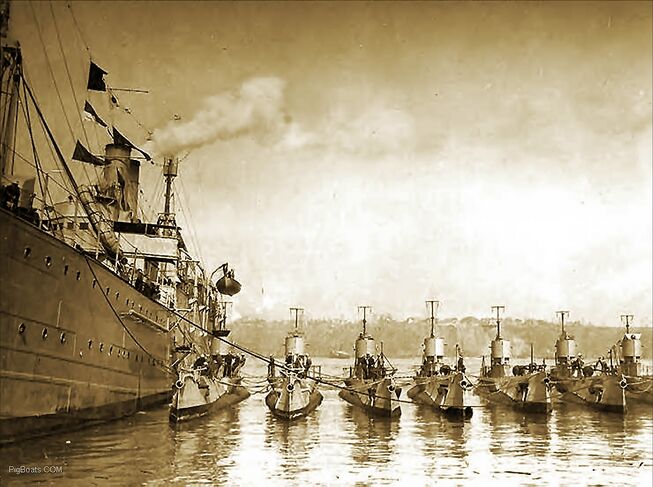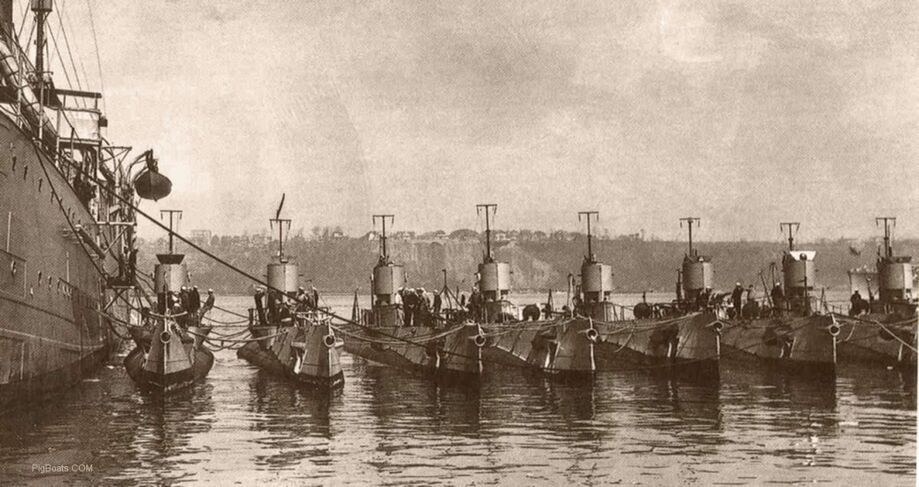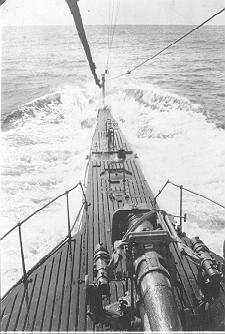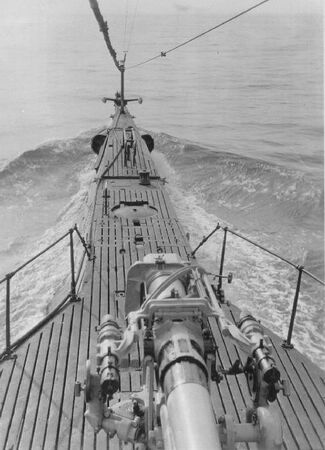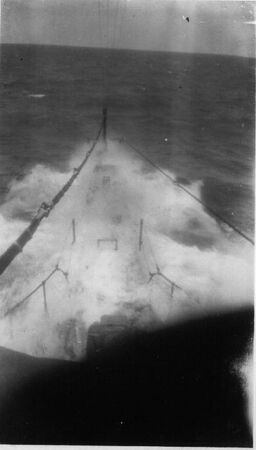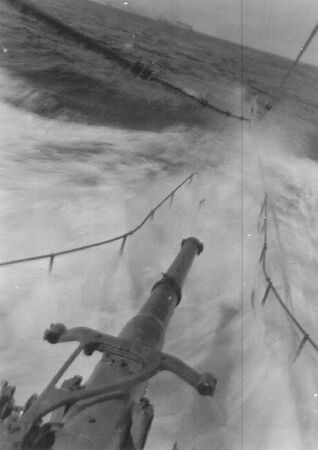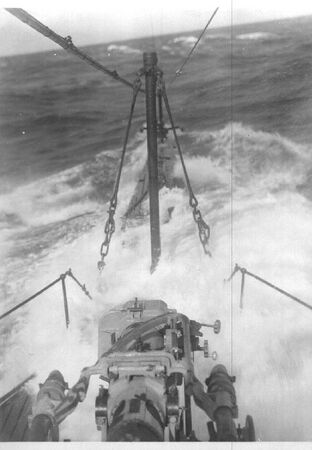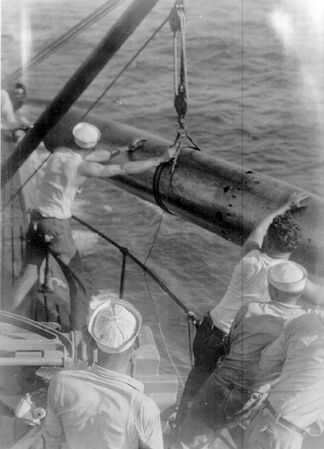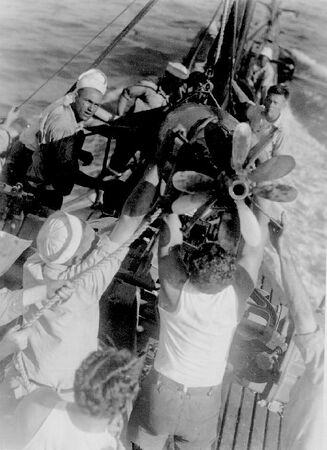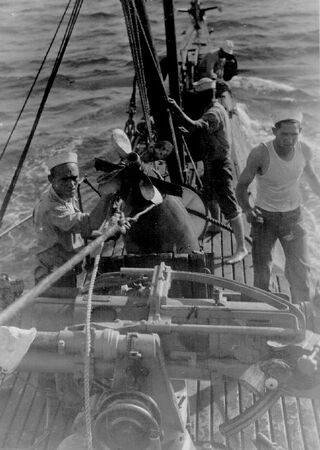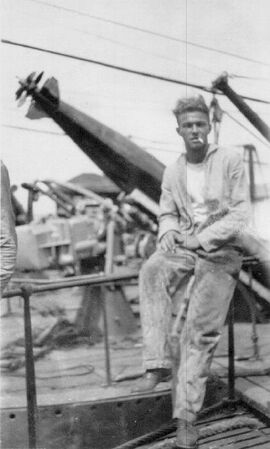R-class group photos: Difference between revisions
Pbc captain (talk | contribs) No edit summary |
Pbcjohnston (talk | contribs) Added group photo |
||
| Line 1: | Line 1: | ||
[[File:R-Boat Header 1.jpg]] | [[File:R-Boat Header 1.jpg]] | ||
[[File:R-17 with r-19.jpg|left|500px]] | |||
<div style="text-align: justify;"><span style="color:#00008B">This photo was taken in approximately March 1919, (about 6 months after R-17's commissioning), at the San Pedro piers near Los Angeles, California. The boat closest to the camera is believed to be the [[R-18|'''R-18 (SS-95)''']]. At this time the R-18 did not have any anti-fouling apparatus mounted around her "T" shaped SC Tube sound gear. The boat with the triangle is the R-17. The boat with the "plus sign" on her conning tower is the [[R-19|'''R-19 (SS-96)''']]. Both of these submarines have men and officers on the bridges. The last submarine in this nest is the [[R-20|'''R-20 (SS-97)''']], just one of her three vertical stripes can be seen. | |||
The boats have their portable navigation light mounted to the "Y" shaped spreaders used to pass the clearing wires, (used for passing mine cables over the submarine). These lights are hung on large "hooks" on the end of each spreader. The lights were then plugged into waterproof electrical outlets. At the extreme left, just above the man's head on the bridge, one of these "hooks" for the nav lights can be seen. The R-19 also has crew bedding hung on the clearing wires for airing and drying. | |||
All boats are carrying the 3"/23 caliber Mk 9 gun built at the Naval Gun Factory. The muzzle end of the gun can be seen protruding vertically through a circular gun shield, with the breech end of the gun retracted into a watertight tub down in the forward battery compartment. These guns were disliked by the crews as being too little in hitting power and dangerous to use as they had a tendency to retract spontaneously, often times onto feet or toes. They were soon to be replaced by the 3"/50 caliber Mk 6 gun. | |||
The nest as a whole seems to be warping away from the pier. The man in the center right foreground is tending a hawser still attached to the pier. A man at the extreme right on the R-19 seems to be tending a line attached to the R-17. The men on the deck of the R-20 all seem to be facing away from the camera as if in expectation of something to happen on that side of the submarine. The gangplank from the R-17 to the R-18 has been removed, the one between the R-17 and R-19 is still there. It can't be seen if the one between R-19 and R-20 is still in place. | |||
<small>Photo in the private collection of Ric Hedman.</small> | |||
[[File:Red bar sub new.jpg]] | |||
[[File:R-Class at 79th street.jpg|left|500px]] | [[File:R-Class at 79th street.jpg|left|500px]] | ||
Revision as of 14:32, 25 September 2023
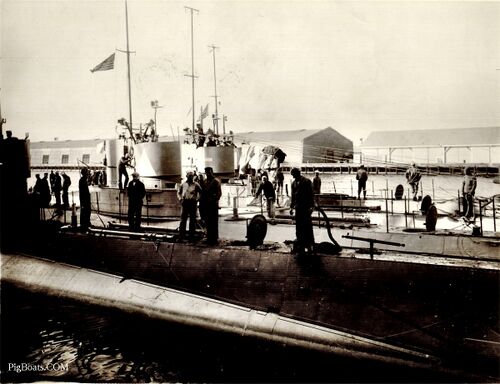
The boats have their portable navigation light mounted to the "Y" shaped spreaders used to pass the clearing wires, (used for passing mine cables over the submarine). These lights are hung on large "hooks" on the end of each spreader. The lights were then plugged into waterproof electrical outlets. At the extreme left, just above the man's head on the bridge, one of these "hooks" for the nav lights can be seen. The R-19 also has crew bedding hung on the clearing wires for airing and drying.
All boats are carrying the 3"/23 caliber Mk 9 gun built at the Naval Gun Factory. The muzzle end of the gun can be seen protruding vertically through a circular gun shield, with the breech end of the gun retracted into a watertight tub down in the forward battery compartment. These guns were disliked by the crews as being too little in hitting power and dangerous to use as they had a tendency to retract spontaneously, often times onto feet or toes. They were soon to be replaced by the 3"/50 caliber Mk 6 gun.
The nest as a whole seems to be warping away from the pier. The man in the center right foreground is tending a hawser still attached to the pier. A man at the extreme right on the R-19 seems to be tending a line attached to the R-17. The men on the deck of the R-20 all seem to be facing away from the camera as if in expectation of something to happen on that side of the submarine. The gangplank from the R-17 to the R-18 has been removed, the one between the R-17 and R-19 is still there. It can't be seen if the one between R-19 and R-20 is still in place.
Photo in the private collection of Ric Hedman.
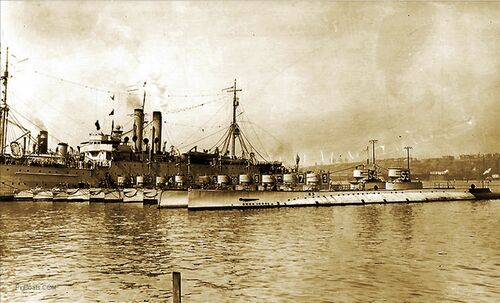
U.S. Navy photo.
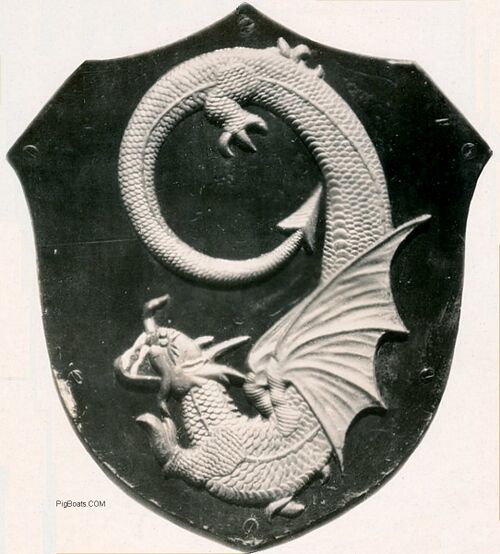
Photo from the private collection of Ric Hedman.
U.S. Navy photos.
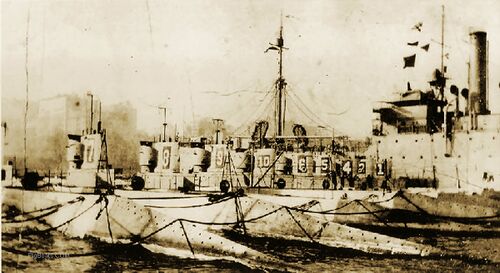
U.S. Navy photo.
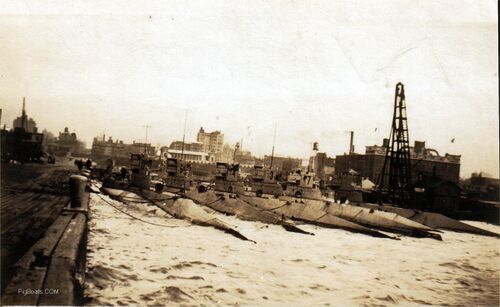
U.S. Navy photo.
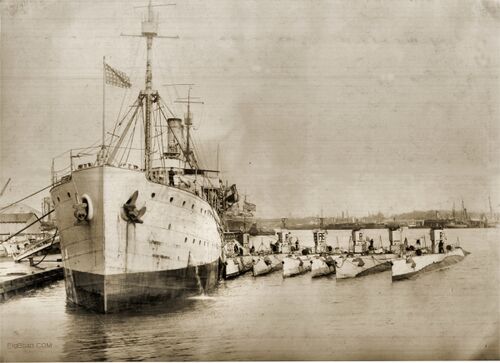
The photo is purported to have been taken on May 2, 1920 at New York City. The background does not look to be the New Jersey shore seen in images above but more like the East River and Brooklyn. More research is still needed.
An officer can be seen standing on the deck of the Camden in front of one of the four 4"/50 caliber guns the Camden carried. She also carried two 3"/50 caliber guns. There appears to be other Navy vessels moored near and around her and the submarines.
Photo from the private collection of Ric Hedman.
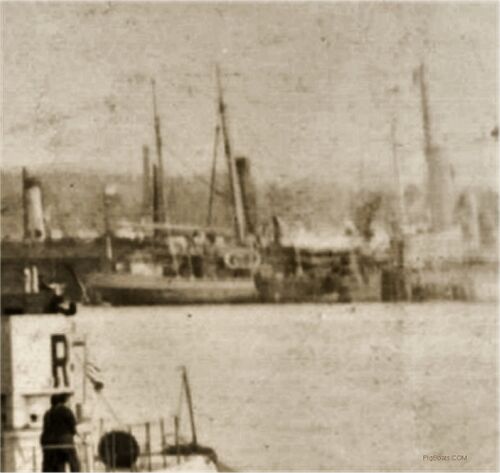
Photo from the private collection of Ric Hedman.
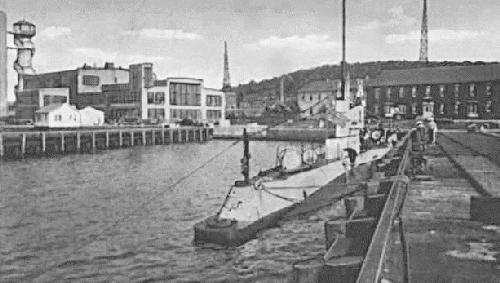
Photo from the private collection of Ric Hedman.
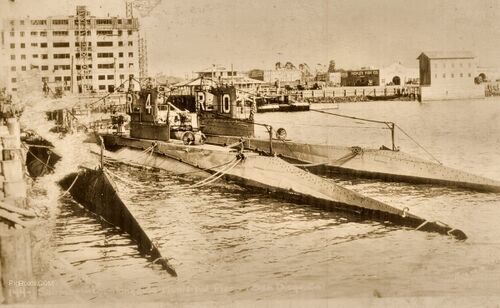
Photo from the private collection of Ric Hedman.
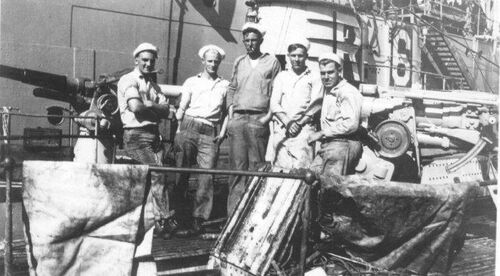
Photo from MMCM(SS) Rick Larson, USN (Ret.)
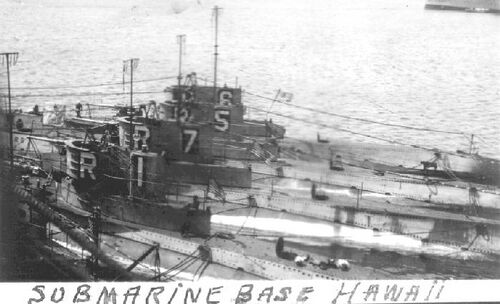
Photo provided by MMCM(SS) Rick Larson, USN (Ret.)
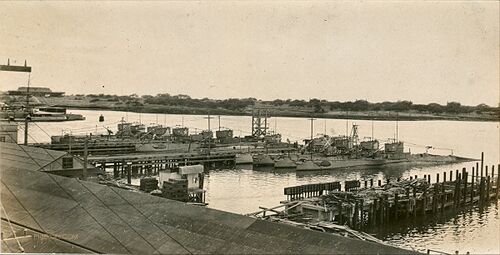
Photo from the private collection of Ric Hedman.

Photo from the private collection of Ric Hedman.

Photo from the private collection of Ric Hedman.
Photos in the private collection of Ric Hedman.
Photos in the private collection of Ric Hedman.

The R-2 was enroute to New London, Ct. and attached to Submarine Division 4 (SUBDIV 4) and for the next ten years served as a training ship for the Submarine School at New London and for the Yale University NROTC unit.
Photo provided by MMCM(SS) Rick Larson, USN (Ret.)

The R-4 was to join R-2 in New London, serving as a training ship at the Submarine School and for the Yale University NROTC unit.
Photo provided by MMCM(SS) Rick Larson, USN (Ret.)
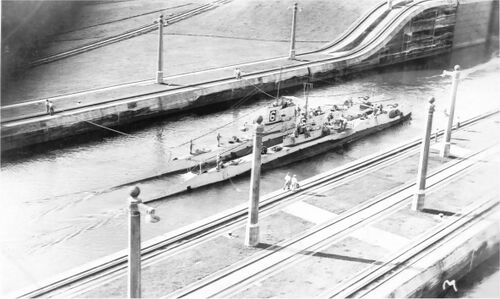
Depression era economics and the provisions of the Washington and London Naval Treaties were forcing the Navy to lay up these relatively new submarines. The R-class submarines put into the mothball fleet in Philadelphia were reactivated in 1940 and put back into service as war clouds loomed. Keeping them around proved to be a good decision.
Photo provided by MMCM(SS) Rick Larson, USN (Ret.)
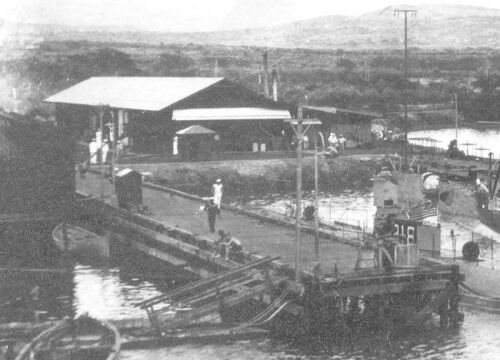
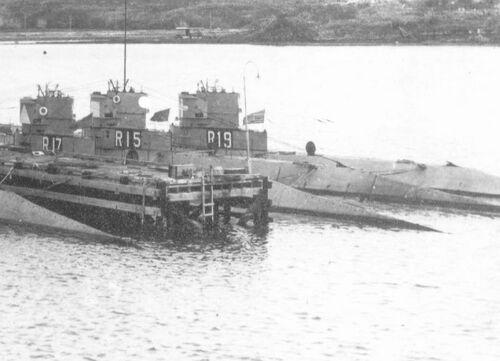
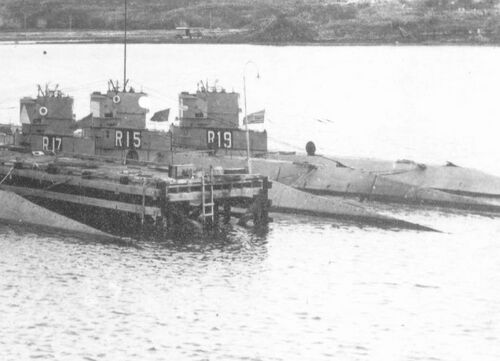
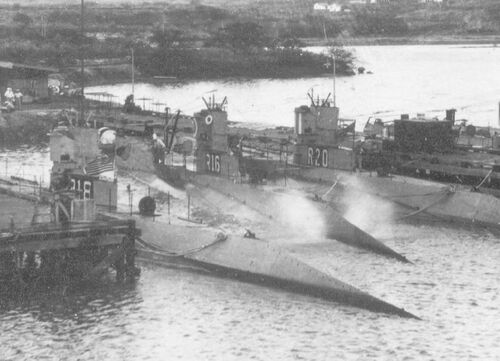
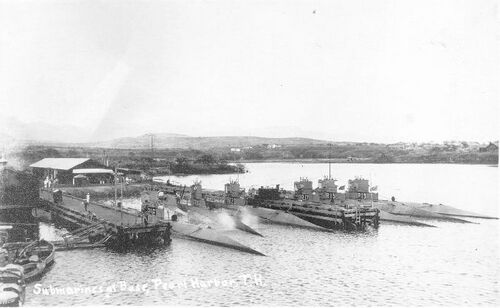
Page created by:
Ric Hedman & David Johnston
1999 - 2023 - PigBoats.COM©
Mountlake Terrace, WA, Norfolk, VA
webmaster at pigboats dot com

